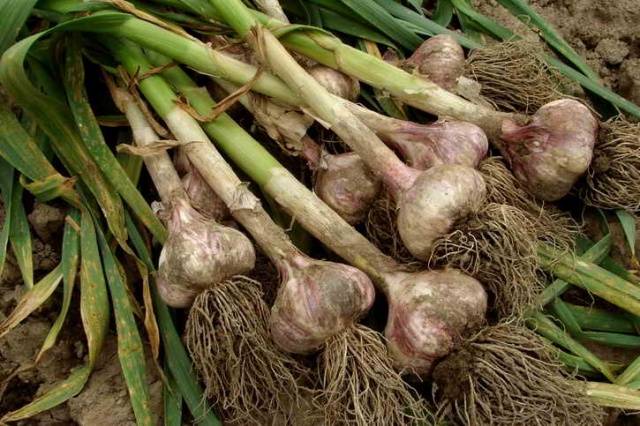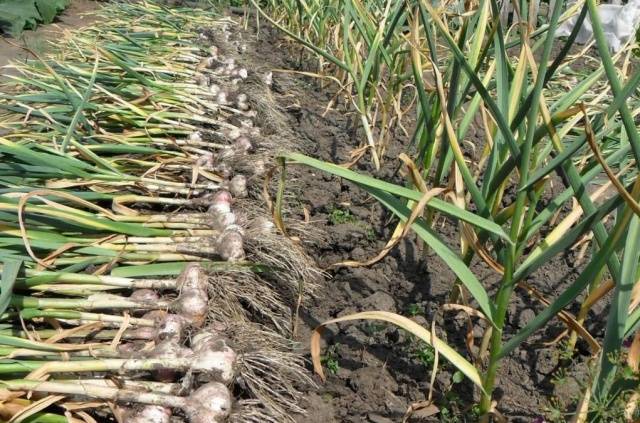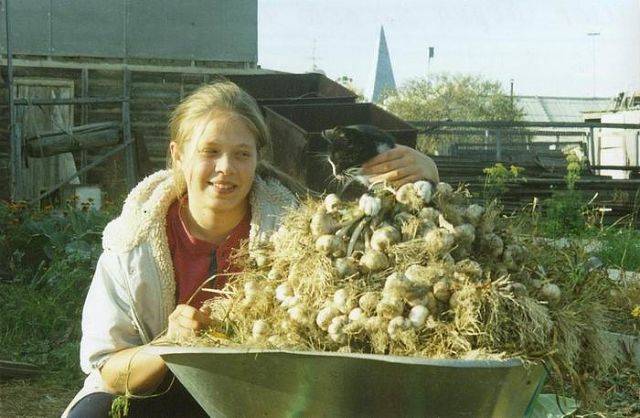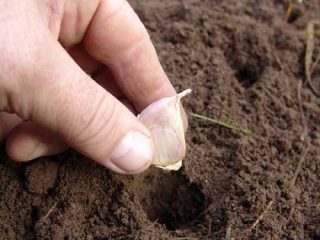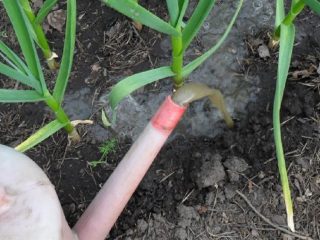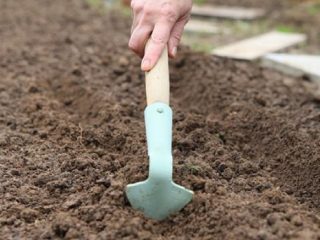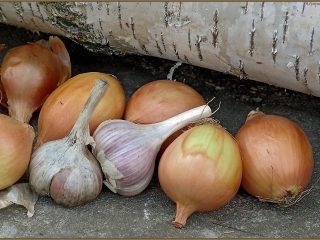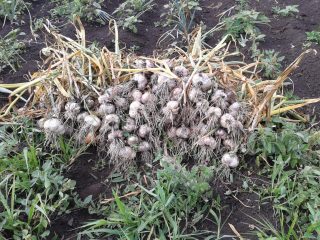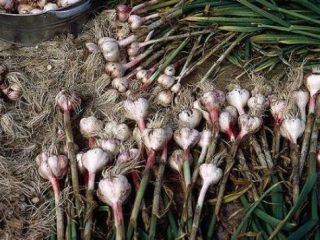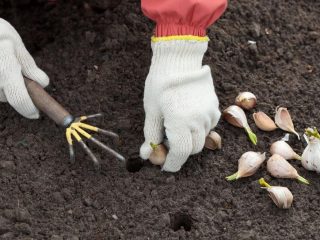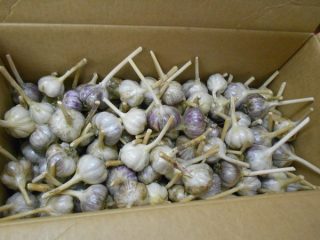Content
Garlic is a healthy vegetable that never lingers on store shelves. But many Russians who have their own plots prefer to grow garlic with their own hands. After all, the finished products do not contain harmful substances, since gardeners most often do not use chemicals and products.
Beginners can also grow healthy vegetables. They are the ones who most often ask when to remove spring garlic from the garden for winter storage. This is perhaps the most important and difficult question, since it determines whether the time and effort spent on growing a healthy vegetable will be beneficial. We will try to talk about this clearly.
Landing time is important
The answer to the question of when to harvest spring varieties planted in spring will depend on many parameters:
- The climatic conditions of the region, and accordingly, the time of planting cloves in the ground. As a rule, garlic is planted before the ground warms up too much, before the mass flight of onion flies. The cloves have time to take root, and then the harm from the larvae is minimal.
- In central Russia and Siberia, cloves are planted at the end of April, early May. The onset of spring also needs to be taken into account. Morning frosts can be harmful.
- The weather in summer is also an important factor. Beginners should remember that in dry, hot weather, ripening occurs faster, which means that harvesting will begin earlier.And in cool, rainy summers it stretches, so the harvesting time for spring varieties is delayed.
Why are we talking about the timing of planting vegetables in the spring? The fact is that you can mathematically calculate the approximate time for harvesting spring garlic. As a rule, this plant needs 100-102 days, a little more than three months, to fully mature.
It turns out that the cloves of spring varieties of garlic planted at the end of April need to be harvested in the first ten days of August. If planting was done a week later, then we harvest the vegetable after August 15th. Sometimes the harvesting period extends until the beginning of September.
Is the garlic ripe?
You can understand when spring garlic is ready visually, based on special signs indicating its maturity and readiness for harvesting.
We recommend that beginners carefully read the advice of experienced gardeners:
- the vegetative process slows down, the plant stops producing new feathers;
- the lower, upper leaves and stem of the vegetable lose their greenness and turn yellow;
- the neck becomes thinner, soft to the touch, the stem goes from a vertical position to a horizontal one.
- Most of the plants turn yellow and lie down.
Yellowing of leaves and stems can occur for various reasons, so it should not be considered the only and main indicator. There are other points to pay attention to during a visual inspection.
One of the most important indicators by which you can determine when to dig up spring garlic is the formation of the head. To do this, you can pull out 1-2 plants.If the following conditions are met, then we can assume that the garlic is ripe and it’s time to harvest it:
- The bulb is dense, with a clear division into cloves.
- The bottom is dry with dark roots.
- The shirt is intact, it has three protective layers. The top layer is rustling and can be easily removed without damaging the integrity of the head.
- The cloves can be separated without much effort.
- The scales acquired the color characteristic of the variety.
If the garlic has not reached marketable condition, then it has a loose and soft head. In overripe bulbs, division into cloves is observed, and new white roots are present.
Is it possible to speed up ripening?
As a rule, the ripening of spring garlic occurs unevenly, not only because of the variety. Even a lack or excess of moisture during watering can affect the ripening time. When you harvest spring garlic, do not tear out the entire bed, but do it selectively.
Firstly, the question of timing of garlic harvesting spring planting is also important because in 2-3 weeks you need to stop the growing season and direct all the plant’s forces to ripening. It is necessary to stop watering.
Secondly, you need to know when to dig spring garlic also because in August, as a rule, prolonged rains begin. They can reduce the shelf life of the vegetable. If you found out from the weather report when bad weather will begin, you can slightly speed up the ripening process of garlic in order to remove it earlier:
- choose soil to expose the heads;
- tie the garlic stalks into a knot.
When to harvest garlic:
How to dig properly
Garlic is harvested in dry, sunny weather to leave the selected crop in the garden for several hours to dry.It is not recommended to simply pull out the plants: the root is very long and firmly anchored in the ground. Most often, the stem breaks off at the neck, and the head itself remains in the ground. It is recommended to dig up garlic from the garden with a pitchfork, this way it is less injured.
Experienced gardeners advise not to cut the stem right away. The fact is that during the drying process, the outflow of nutrients into the bulb continues. You can remove the stem before sorting the garlic and storing it.
When you dig for garlic, immediately discard plants with obvious damage so that the disease does not spread to healthy heads. The harvest, lightly dried in the sun, is transferred to a well-ventilated area. There it will ripen for 2-3 weeks. Only after that pruning is carried out roots and stems, sorting and storing.
Let's sum it up
So, we told you when to start harvesting spring garlic, taking into account a visual inspection of the plants, the time of planting the cloves and the approximate growing season. Of course, no one will argue that it is impossible to name the exact date for harvesting the garlic beds. Everything depends, first of all, on the climatic characteristics of the region, weather conditions, and variety.
Of course, for the first time, beginners will have to take into account all the options for checking the readiness of garlic for harvesting, but over time, the “identification” procedure will become simpler. We wish you a rich harvest and its preservation until spring.
